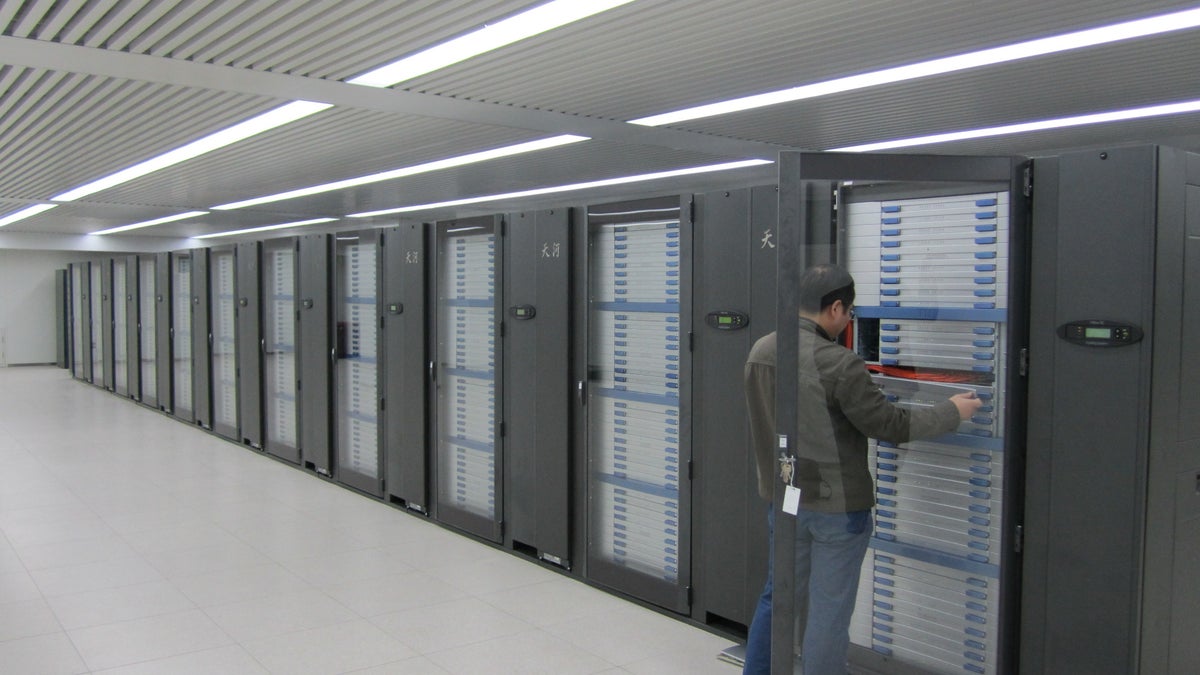Nvidia helps China to supercomputer crown
Processors from Nvidia play a big role in powering what the graphics chip supplier claims is now the fastest supercomputer in the world. The China-based machine has achieved 2.507 petaflops.

Nvidia chips are powering a Chinese supercomputer that the graphics chip supplier claims has achieved the fastest speeds to date. The "Tianhe-1A" has hit 2.507 petaflops, beating a system at Tennessee-based Oak Ridge National Laboratories.
The new system would top another Chinese supercomputer also using Nvidia chips called Nebulae, rated at 1.271 petaflops (one petaflop is one thousand trillion operations per second). Both the Nebulae and Tianhe-1A performance ratings are based on the Linpack benchmark, the most widely used performance yardstick for supercomputers. Nebulae is currently rated No. 2 in the world based on the Top500 June list. The Oak Ridge system is rated the fastest at 1.75 petaflops, according to the Top500 June list. Tianhe-1A will top the supercomputer list at a Chinese conference that starts tomorrow.
Tianhe-1A combines 7,168 Nvidia Tesla M2050 graphics processing units (GPUs) with 14,336 Intel Xeon central processing units (CPUs). Nvidia is not only claiming the performance crown but a greener supercomputer, as well. The machine consumes only 4.04 megawatts, making it three times more power efficient than a CPU-only system, Nvidia said in a statement.
High-end GPUs typically contain hundreds of processing cores, allowing them to accelerate certain types of computational tasks more efficiently and thereby much faster than CPUs.
The machine, which is already fully operational, was designed by the National University of Defense Technology (NUDT) and is housed at the National Supercomputing Center in Tianjin, Nvidia said. In a teleconference yesterday, Tesla chip marketing manager Sumit Gupta said applications of the "open science project" will include astrophysics, material science, and bio-chemistry. Nvidia is also working with laboratories and universities in the U.S.
China continues to increase the number of supercomputer systems on the Top500 list and is now tied with Germany at 24 for the No. 4 spot, after the U.S., U.K., and France, according to the Top500 Web site. "China also climbed with respect to overall installed performance and is now holding for the first time the No. 2 spot behind the USA and ahead of Germany," the site said.
"China has recognized that they need to invest in high-performance computing to continue to advance their technology, to advance their research and science. They have an economy moving beyond just manufacturing," Nvidia's Gupta said. Because China is relatively new at building supercomputers, he said, the use of GPUs has enabled it to "leapfrog the performance curve."

